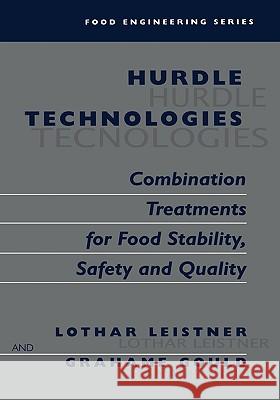Hurdle Technologies: Combination Treatments for Food Stability, Safety and Quality » książka
Hurdle Technologies: Combination Treatments for Food Stability, Safety and Quality
ISBN-13: 9780306472633 / Angielski / Twarda / 2002 / 194 str.
Since centuries foods have been preserved by heating, chilling, drying, salting, conserving, acidification, oxygen-removal, fermenting, adding various preservatives, etc., and often these methods were applied in combinations. More recently the underlying principles of these traditional methods have been defined (i.e., F, t, aw, pH, Eh, competitive flora, various preservatives), and effective limits of these factors for microbial growth, survival, and death were established. Food preservation and also food quality depends in most cases on the empirical and now more often on the deliberate and intelligent application of combined preservative factors, i.e. on so-called hurdle technology. It also became obvious that futuristic food preservation methods (e.g., high hydrostatic pressure, high-intensity pulsed electric fields, high-intensity pulsed light, oscillating magnetic fields as well as food irradiation) are most effective in combination with additional hurdles. Thus, hurdle technology is also the key of food preservation in the future. Furthermore, basic aspects of hurdle technology (i.e., homeostasis, metabolic exhaustion, and stress reactions of microorganisms as well as the multitarget preservation of foods) have been recognized to be of fundamental importance and are increasingly studied in relation to hurdle technology.
Different aspects of improvements of traditional foods and in the development of novel foods via hurdle technology have been covered recently in numerous articles and book chapters. However, Hurdle Technologies: Combination Treatments for Food Stability, Safety and Quality is the first work on hurdle technology in which all aspects, the possibilities and limitations of hurdle technology, are comprehensively outlined and evaluated. World-renowned on the subject, Leistner and Gould were instrumental in the development of the hurdle technology concept and in the last decades have obtained much practical experience in the application of this successful approach in the food industry worldwide.











